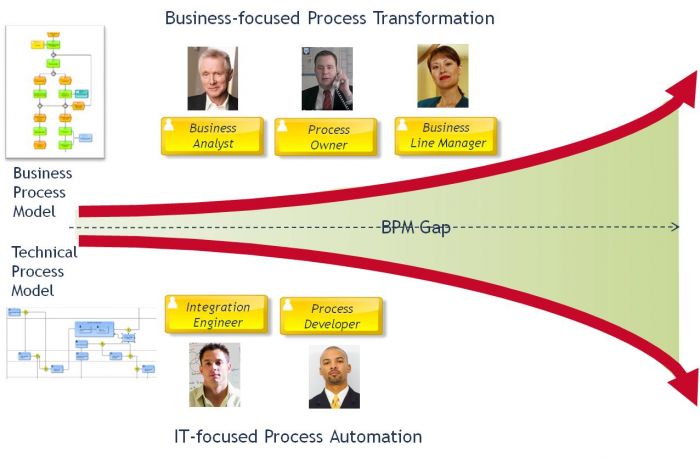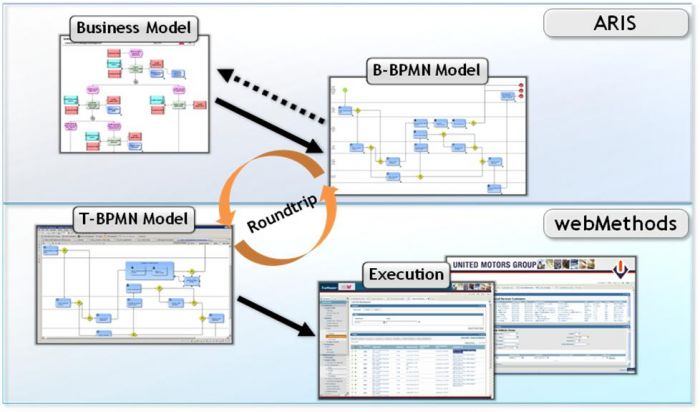In our previous E-BPM posts we described how the business view on a process can be shared with IT for the purpose of process automation. This included how to plan and manage your services with ARIS and CentraSite, how to gather your business requirements in business process models (EPC) in ARIS, how to transform both into a logical BPMN model and share this with your IT department. Now, we have the process model specified in ARIS available in wM for further technical enhancements. Mission accomplished... ? Well no, actually the real challenge is still ahead. Obviously, the technical model needs to be further enhanced to become fully executable. The business process model and technical process models are very likely to diverge again over the course of the project. While most modifications in webMethods will be very technical, some of them may also impact the business processes. Also vice versa, new business requirements may emerge and added to the business process models. As a result, we see the BPM gap – which we just considered overcome - opening wide again.

As the integration of ARIS and webMethods is not a one-way street but a bidirectional collaborative approach between business and IT, it needs to encounter this BPM gap with adequate tooling. This includes:
-
Governance Workflow which controls changes on both sides, notifies stakeholders via e-mail and assigns change management tasks (e.g. review, update, re-import process) to both ARIS and wM users.
-
Model Roundtripping which means the BPMN model can be continuously kept in-synch in both ARIS and wM without losing any information.

-
Conflict Resolution / Merge-View which allows changes in the business process model and/or the technical model to be merged into the logical BPMN model where they are marked visually. The user sees changes listed for his approval or rejection.

-
Review Cycle triggered by the wM process developer to explicitly ask the process engineer for his approval.
-
Ad-hoc Collaboration to invite all process stakeholders to a virtual modeling session in ARIS where you can discuss and model your EPC or BPMN process remotely as a team.
Figure 4: Ad-hoc collaboration in ARIS
These capabilities help business and IT to stay aligned on their process models and join their forces for a continuous process improvement. Instead of enforcing all parties to agree to one BPM tooling, the solution is to let everybody use their tools and notations while providing synchronization, collaboration, and translation mechanisms.
The underlying governance workflow faciliates collaboration and communication between the line of business, BPM experts, and IT:
- It keeps them updated (by e-mails) on the current activities of their counterparts.
- It controls and assigns modeling, development and review tasks by integrated task lists.
- It keeps processes and services in ARIS and webMethods in-synch by the tight integration of CentraSite.
Figure 5: Continuous synchronization of business and IT
Once the technical process model in webMethods is ready for deployment, it is updated to ARIS for documentation purposes and final approval before its deployment on the Enterprise Service Bus. Here it is now ready for execution.



